Supported decision making is about helping people, regardless of age or ability, make their own decisions by using a variety of integrated supports, including other people they trust, technology, community supports, or paid supports. The supports might help a person understand issues/choices, ask questions, receive explanations in a way that works for them, communicate their own decisions to others, or build their own decision-making skills. Just because someone has a certain disability or diagnosis, or is experiencing memory or other challenges related to aging or dementia, doesn’t mean they cannot express preferences or make choices and decisions, with help as needed. It’s really what we all do without even thinking about it! We ask for advice or input from family, friends, professionals, or others we trust in making all kinds of decisions in our lives.
The materials in the section are designed to help a person, family, or a professional explore areas where any person might need decision making support, plan for what it looks like and how it can happen, and seek out the needed supports.
Getting Started
Explore areas where any person might need decision making support, plan for what it looks like and how it can happen, and find the needed supports.
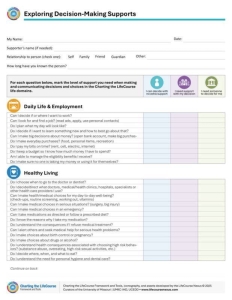
Tool for Exploring Decision Making Supports
Explore the areas of life where people make choices and decisions, and decide when and how much support might be needed for making and communicating decisions.
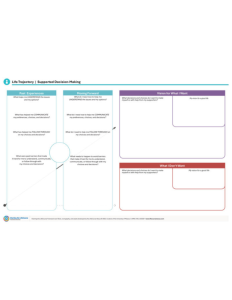
Trajectory for Supported Decision-Making
Organize and express a vision for decision making, as well as what is not wanted. Reflect on what has worked or not in the past, and make plans for moving forward.
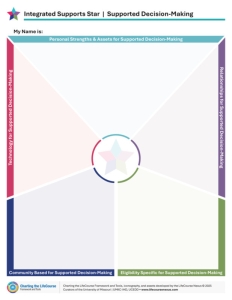
Integrated Support Star for Supported Decision-Making
Use this Star to consider a variety of supports for helping with understanding options, communicating decisions, or following through with choices and decisions.
Supported Decision-Making Portfolio
The Supported Decision Making portfolio will help with identifying personal priorities and the supports needed for understanding options, communicating choices, and following through with decisions. It can be completed by the person in need of support, or with help from family, friends or professionals.
The Charting the LifeCoure Portfolio is designed as a booklet printed on 11×17 paper. It includes the CtLC Trajectory tool on the inside and the Integrated Supports Star on the back. It provides a cover sheet with information about the person.
Additional Resources
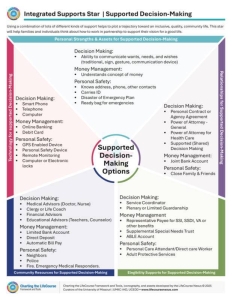
Starter Star for Supported Decision-Making
You can use this informational star to think about different kinds of supports to help with making choices and decisions, and supports for communicating decisions to others.
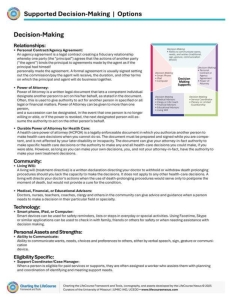
Integrated Support Options for Supported Decision Making
Explore different options for supporting someone to make decisions and choices, organized using the Charting the LifeCourse Integrated Supports Star. Strategies for money management, personal safety, and general decision making supports are listed and explained.
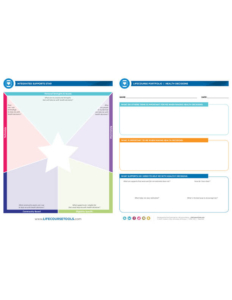
Portfolio for Health Decisions
The Health Decisions portfolio will help with identifying the specific supports a person needs to make health decisions and choices, and what is important to them in making health care decisions. It can be completed by the person, or with help from family, friends, or professional supporters.
Supported Decision-Making Sample Agreements
Anyone can use supported decision-making practices anytime without a formal, written agreement. Sometimes, however, people want to have an agreement in writing, stating what kind of decision -making support they might need, and who they want to support them in making or communicating decisions. These templates are “sample” forms that can be used to make a more formal SDM agreement. One contains check boxes that can be used to specify types of support needed, and the other is more open-ended. They can be used “as is” or can be customized to meet specific decision-making support needs. These documents are not to be considered as legal advice, but are offered as examples to help you get started. You do not have to use an attorney to make an SDM agreement, but if you need legal help or advice, then you should consult an attorney.
For additional agreement examples, click here.
